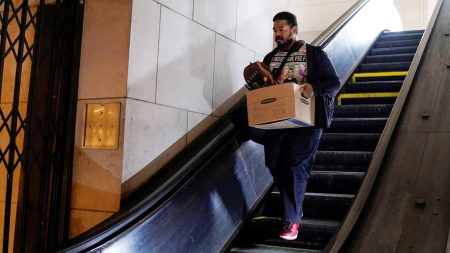Understanding the Shifts in Unemployment Rates: A Closer Look
Introduction: The Unemployment Landscape in January
The unemployment rate in January revealed a mixed bag of trends across different demographics. While the overall U.S. unemployment rate dipped slightly to 4.0%, specific groups experienced varied movements. Notably, Black men saw a significant surge in their unemployment rate, climbing to 6.9% from 5.6% in December. This increase stands out against the backdrop of declines or stability in other groups, such as white and Hispanic workers.
Demographic Insights: A Dive into the Numbers
Delving deeper, the data shows that Black men were disproportionately affected, with their unemployment rate jumping by 1.3 percentage points. Conversely, Black women maintained a steady rate of 5.4%. Hispanic women experienced a drop to 4.5%, while their male counterparts held steady at 4.0%. White men saw a slight decrease to 3.1%, with women in this group marginally improving to 3.3%. Asian Americans, however, faced a rise to 3.7%, though detailed gender data was unavailable.
Labor Force Participation: A Signal of Optimism
The labor force participation rate, indicating those employed or actively seeking work, ticks up to 62.6%, suggesting increased optimism. Black men led this increase, with their participation rising to 69%, up from 68.2%. This rise could indicate renewed confidence in job prospects, as reentering the job market often reflects optimism. However, it also means more individuals are officially recognized as unemployed if they haven’t found work yet.
Expert Perspectives: Unraveling the Data
Elise Gould, an economist at the Economic Policy Institute, offers insights into the spike among Black men. She notes that changes in data collection methods could affect comparisons, and the surge might be a temporary fluctuation. Yet, she emphasizes that the persistent disparity itself is a systemic issue. The increase in participation could mean more Black men are seeking jobs, though the unemployment spike might also reflect underlying structural challenges.
Systemic Issues: The Bigger Picture
The higher unemployment rate among Black men highlights deeper systemic issues, such as discrimination and unequal access to education and job opportunities. These factors contribute to chronic disparities, exacerbated by economic policy limitations. Addressing these issues is crucial for fostering an inclusive economy.
Conclusion: Moving Forward
In conclusion, January’s unemployment data underscores the resilience of certain groups while revealing ongoing challenges for others, particularly Black men. While changes in data collection and increased participation offer context, systemic barriers remain. Policymakers must prioritize targeted solutions to bridge these gaps, ensuring equitable economic growth for all.









